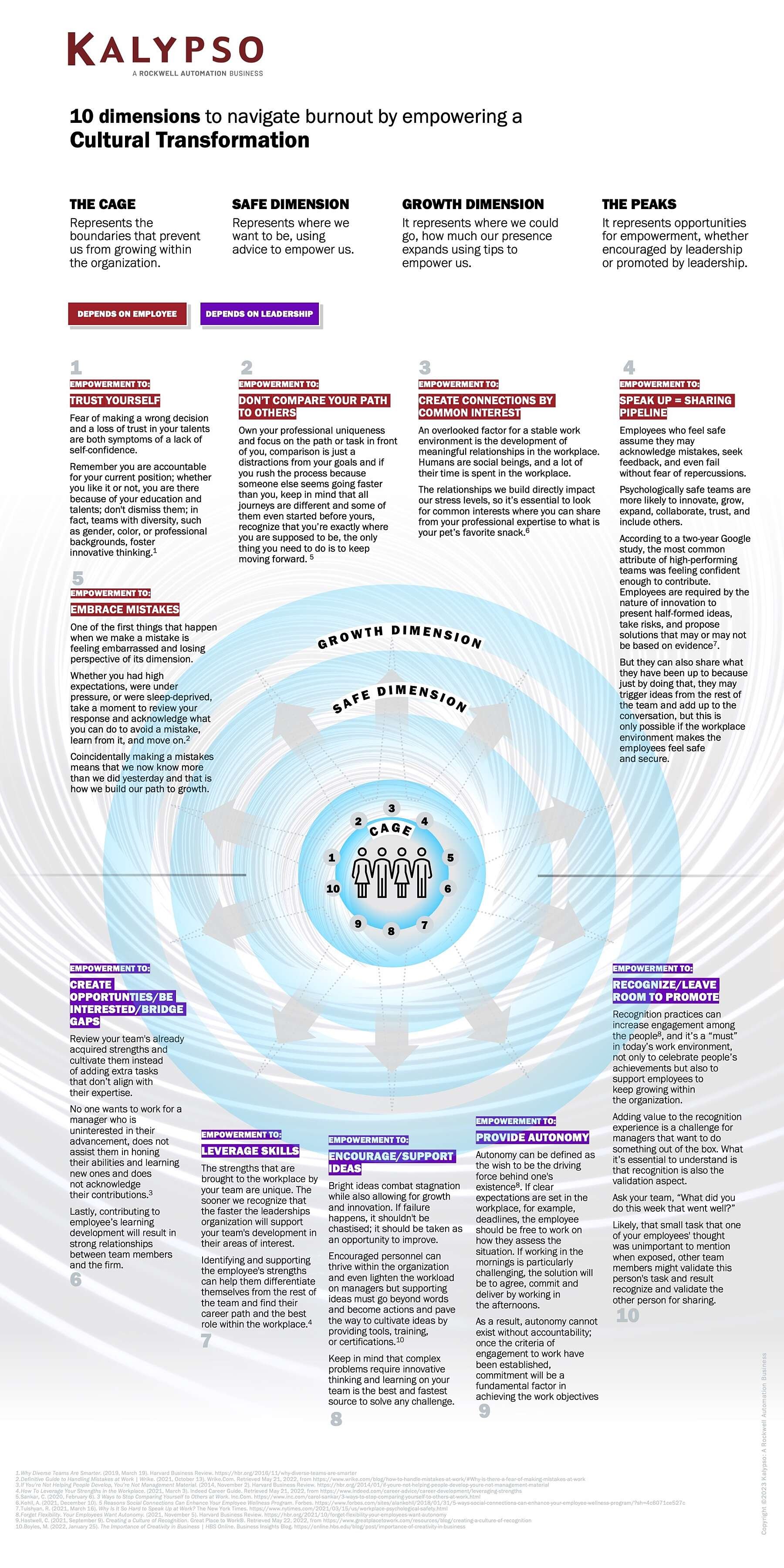10 Dimensions to Navigate Burnout by Empowering a Cultural Transformation
he South Korean philosopher Byung-Chul Han, one of the great philosophers of this contemporary era, mentions in his book "The Burnout Society" that historically, each era has its own set of diseases. Thus, there was a bacterial era, which ended with the discovery of antibiotics; now, in the 21st century, society is facing neurological diseases such as depression, attention deficit hyperactivity disorder (ADHD), borderline personality disorder (BPD), and burnout syndrome.
Burnout is a state of physical, emotional, or mental exhaustion, according to the Mayo Clinic, and an unbalanced workplace where employees feel unsupported, insecure about their job expectations, and a lack of work-life balance can foster this syndrome.
Managers can play an essential role in this situation, and employees can begin to break down the potential barriers of this self-imposed "cage" that limits their growth. It's about nurturing and expanding skills to avoid task accumulation and providing all kinds of tools to ensure that conditions never lead to a state of burnout. Below, I'll share 10 tips for creating a culture of empowerment in your organization (previously published on this site).
Disclaimer: The views expressed are personal opinions of the authors and do not reflect the views of affiliated organizations. The information is for informational purposes only and not intended as professional advice




